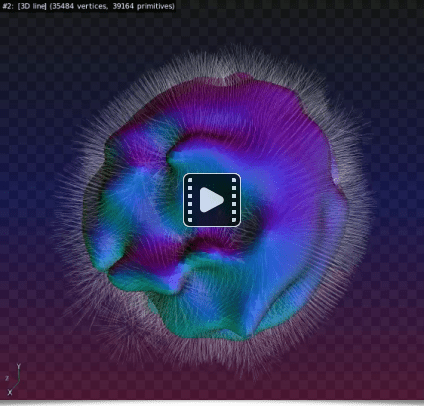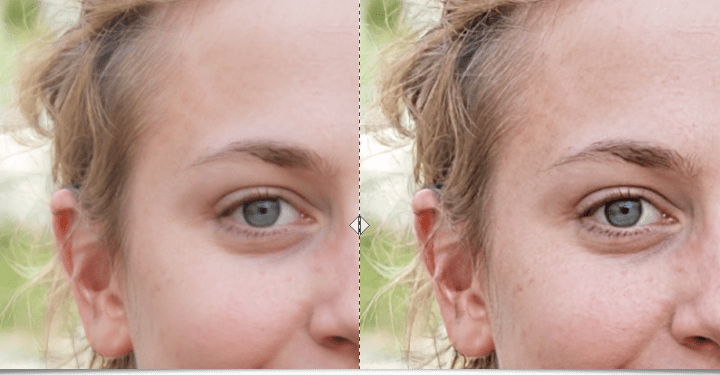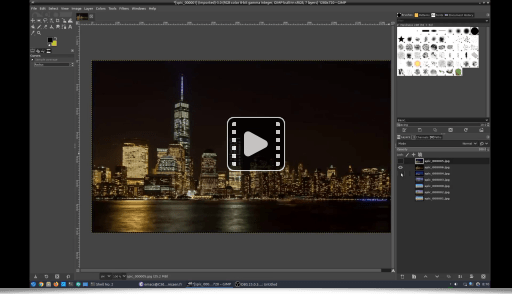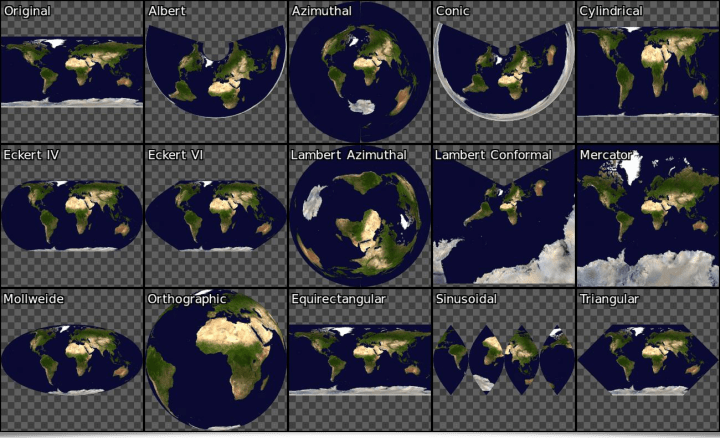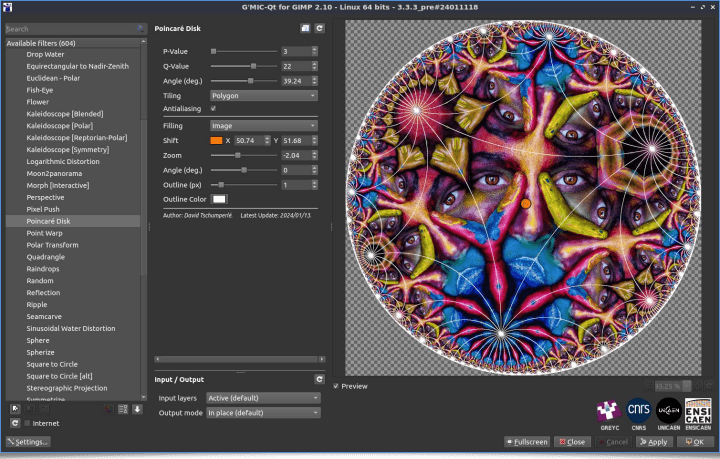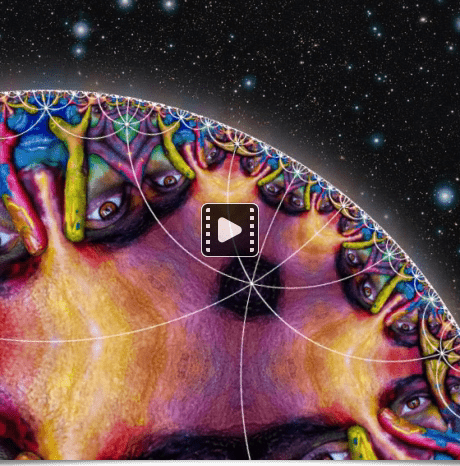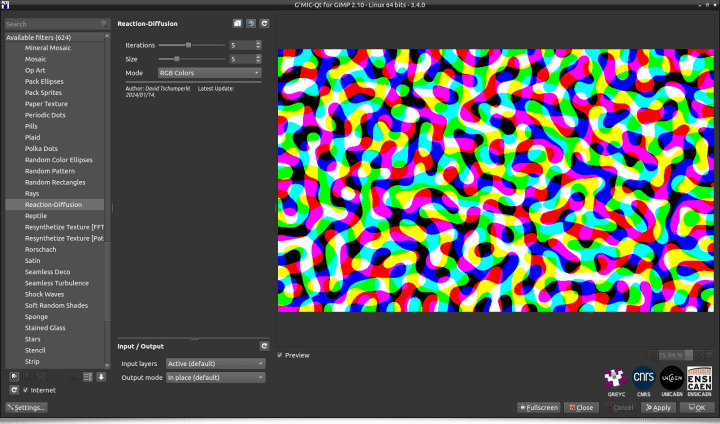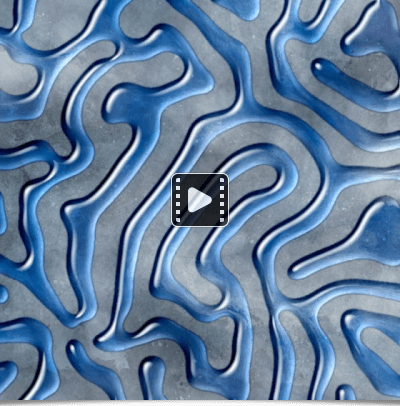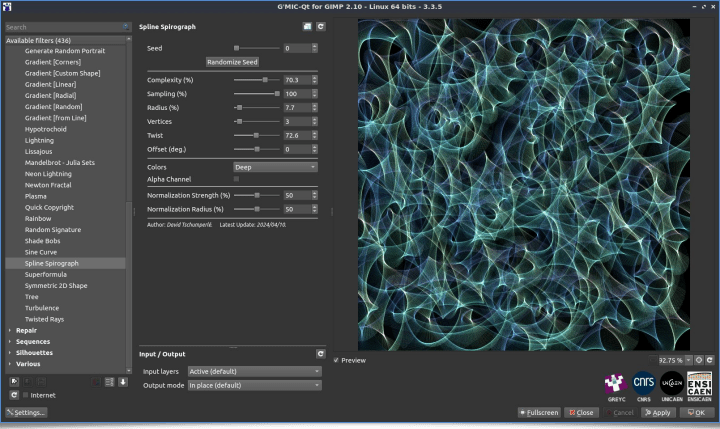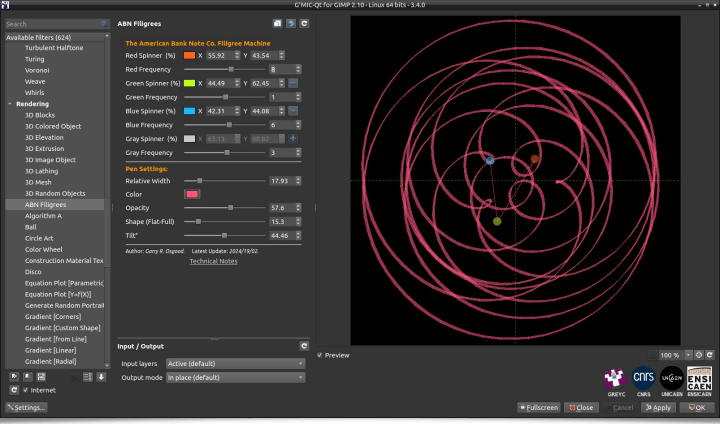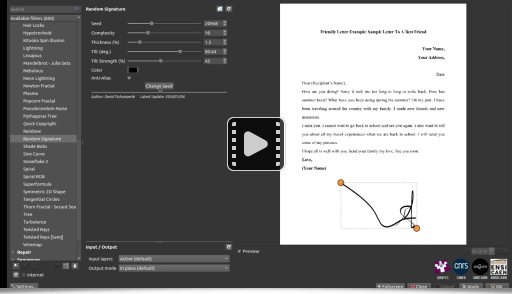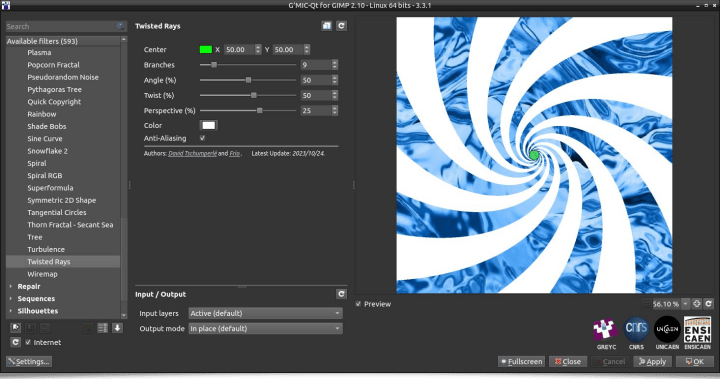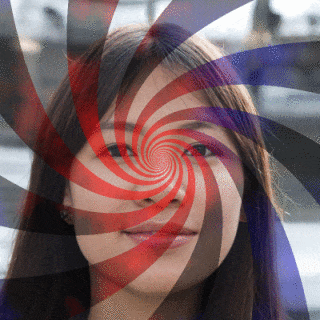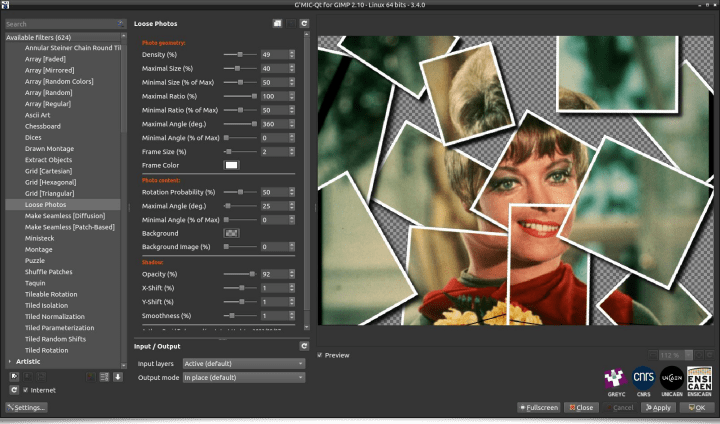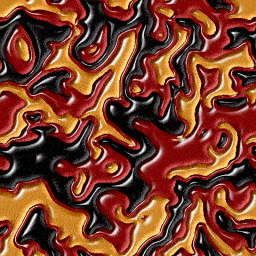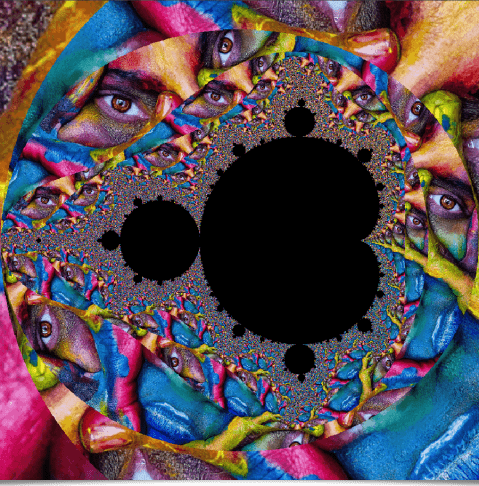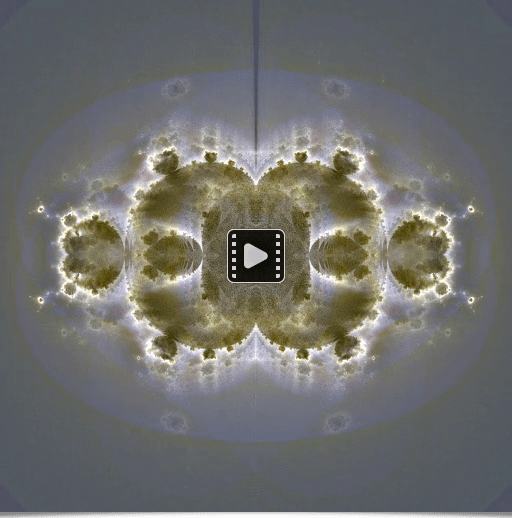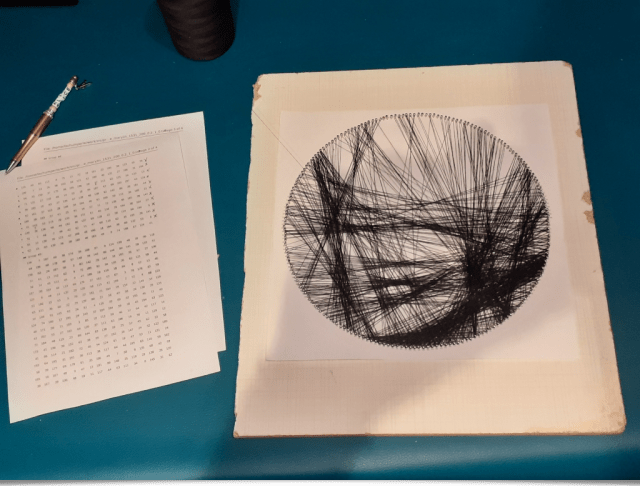G'MIC 3.4.0 : Image Processing in Its Prime!
By David Tschumperlé and Garry Osgood.A new version 3.4.0 of G'MIC (GREYC's Magic for Image Computing) has just been released.
With this new release, we celebrate the project's 16th anniversary!
On this occasion, we summarize the recent features added to our open-source framework for digital image processing, following our previous news on this subject (published in May 2023).
Table of Contents
1. G'MIC in a Nutshell2. What's New in Version 3.4.0?
3. Details of the New Filters
3.1. Photo Retouching
3.2. Distortion Filters
3.3. Degradation Filters
3.4. Rendering and Texture Filters
3.5. Artistic Effects
4. A Software with Varied Uses
5. Conclusions
Note: Click on the images of the article, to get a full-resolution version, or to play a video when the images contain the icon `
1. G'MIC in a Nutshell
G'MIC is an open-source framework for digital image manipulation and processing, developed in the IMAGE team at the GREYC research laboratory in Caen (UMR CNRS 6072).It defines various user interfaces for applying a wide range of algorithms to images and signals. The core of the project is the G'MIC scripting language interpreter specifically designed to ease the prototyping and implementation of new image processing algorithms and operators. Users can harness operators from the several hundred already implemented, or write their own custom operators. These can then be accessed through the several user interfaces that the project offers.
The most popular G'MIC interfaces are:
1. gmic, a command-line tool, and a useful complement to ImageMagick or GraphicsMagick for processing, generating, or analyzing images from a shell;
2. G'MIC Online a web service where many G'MIC filters can be applied on images, directly from a web browser;
3. G'MIC-Qt a popular plugin supported by many digital image editing applications such as GIMP, Krita, Paint.NET, and Photoshop (thanks to its availability as a 8bf plugin).
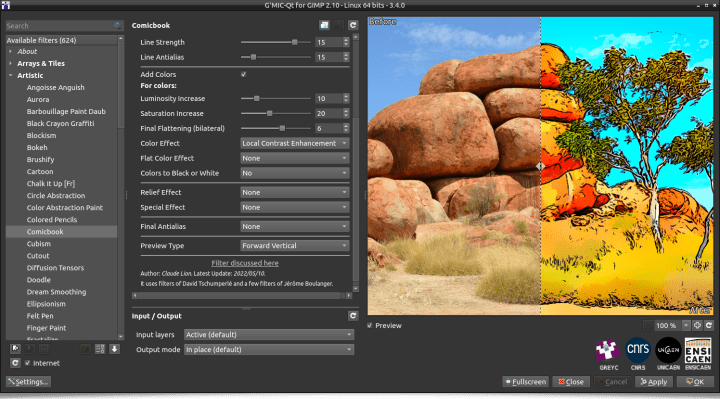
Fig. 1.1. Preview of the G'MIC-Qt plugin version 3.4.0, running in GIMP 2.10, with the Comicbook filter selected.
2. What's New in Version 3.4.0?
Version 3.4.0 of G'MIC focuses on stability and long-term support: After more than 15 years of continuous development, G'MIC's core elements have been extensively put through their paces. We now strive for stabilizing the key Application Programmer's Interfaces (APIs): libgmic, to integrate G'MIC features into C or C++ code, G'MIC-Qt plugin to port the plugin to new hosts, and the syntax of the G'MIC script language itself, including the freezing of the parameter settings of the G'MIC commands already available.Thus, all versions of the 3.4.x branch will be dedicated to bug fixing and developing features that do not require modification of the language core, such as developing new filters or image processing operators. Attention will be paid to ensuring maximum backward compatibility among 3.4.x releases. In this sense, this version 3.4.0 represents a long term milestone release in the project's history.
That said, in the run-up from versions 3.3 to 3.4, there have been notable improvements to several user interfaces:
G'MIC Online (G'MICol): This web service allows users to apply G'MIC filters to their uploaded images through their web browsers. It has existed for several years, largely unchanged from its original form, while interactive web techniques have advanced. In 2024, the DDA (Application Development and Deployment) team at the GREYC laboratory undertook a complete overhaul of G'MIC Online. The web service now sports a new look, employs significant user interface improvements, with more intuitive widgets, an enhanced preview window, a choice between light and dark themes, revamped handling of filter favorites and better integration of the web service with the G'MIC core, such that web users can now access recently developed filters and image processing pipelines.

Fig.2.1. Preview of the revamped G'MIC Online web service released with version 3.4.0 (here with the light theme).
Visit G'MIC Online and give it a real-world test 😱! And don't hesitate to report any issues. In any case, a big thank you to our colleagues in the DDA team for this noteworthy overhaul!
G'MIC-Qt Plugin: Over the past year, the plugin has acquired more than 40 new image processing filters, detailed below. Many employ the new Random Parameters button, which generates arbitrary filter settings, furnishing rapid previews that can be quickly evaluated for practical or aesthetic worth.
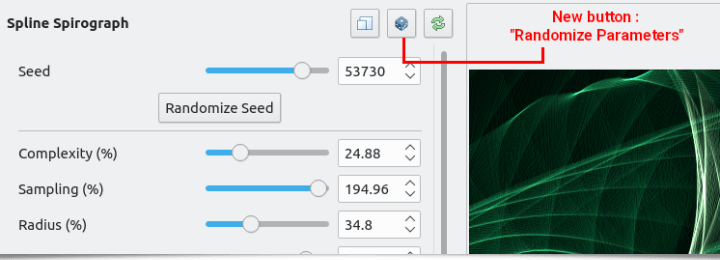
Fig.2.2. G'MIC-Qt Plugin: The new Random Parameters button assigns random values to the selected filter's parameters.
gmic CLI Tool: All filters created by the developer community are now integrated within the command-line tool executable. There are no longer discrepancies in the number of default filters available between the G'MIC-Qt plugin and the gmic CLI tool. Previously, users needed to force filter updates with $ gmic update to align environments.
gmic now offers over 4000 functions to process your images from the command line. Notable efforts have been made to improve the integrated image viewer available through the display command, which has been completely re-tooled to allow viewing different image types within the same interface.
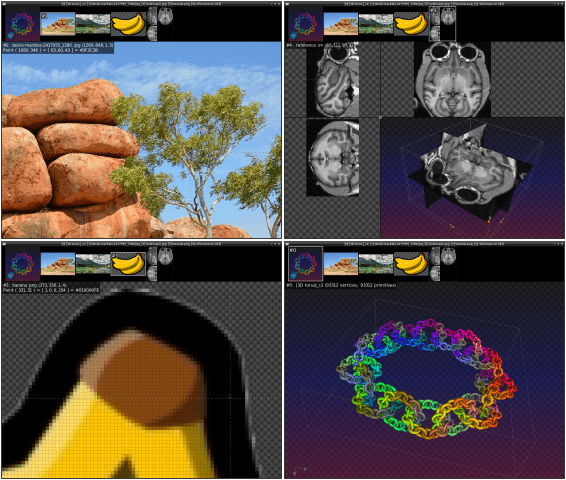
Fig.2.3. gmic CLI Tool: The G'MIC image viewer has been completely re-implemented and allows viewing different image types within the same interface.
This is also the case for the mathematical function or 1D signal viewer (command plot), which has been revamped:
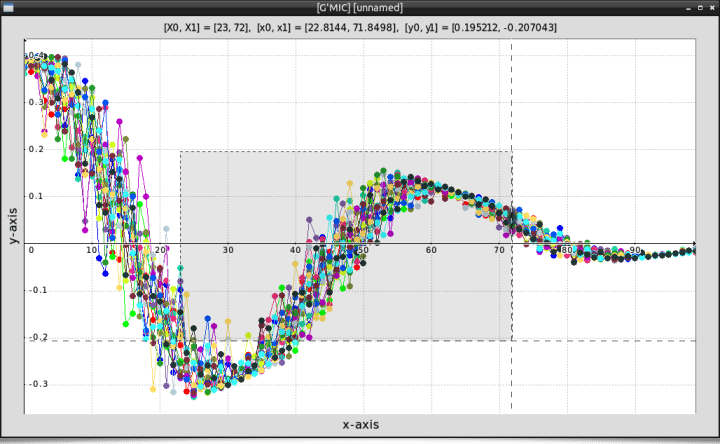
Fig.2.4. gmic CLI Tool: The G'MIC viewer for mathematical functions or 1D signals has also been re-implemented.
This makes gmic a handy tool, even if we limit ourselves to viewing images or signals on the command line.
Other Improvements:
The integrated mathematical expression evaluator has evolved significantly: it is one of the essential bricks of the G'MIC language, as it is responsible for evaluating the results of the mathematical operations needed in scripts (needless to say, calculations are done all the time in image processing). This evaluator has been enriched with many new functions, especially for the calculation and processing of vectors and matrices, and native manipulation of heaps.
Many native (C++) functions formerly in the shared binary object library have now been entirely rewritten in the G'MIC language. This facilitates their maintenance and further development, as future work can be scripted for immediate effect, instead of being subject to compilation and linking. Situated at the script level, such modifications become immediately available to users, as distribution of binaries will no longer be required.
The commands for loading/saving 3D meshes in .obj (Wavefront) format have been improved, and new commands for processing/creating 3D meshes have emerged (e.g., to visualize the normal vectors at the vertices of a mesh, as illustrated in the video below). And, no, this is not a rotten apple:
That's all for the general improvements of the various interfaces offered by the framework. Let's now move on to the details of the new filters and image processing features that have appeared in G'MIC over the past twelve months.
3. Details of the New Filters
In this extensive section, we categorize and describe the recent filters by type of use: Photo Retouching, Distortion Filters, Degradation Filters, Rendering and Texture Filters, and finally Artistic Effects.3.1. Photo Retouching
Three interesting filters have appeared in the G'MIC-Qt plugin to help photographers retouch their digital shots.First, the Colors / Mixer [Generic] filter, a color channel mixing filter that offers the possibility to choose from no less than 16 different color spaces/representations for mixing (CMY, CMYK, HCY, HSI, HSL, HSV, Jzazbz, Lab, Lch, OKlab, RGB, RYB, XYZ, YCbCr, YIQ, and YUV). This constitutes a good alternative to traditional contrast or color enhancement tools, to retouch photos that might be a bit dull.
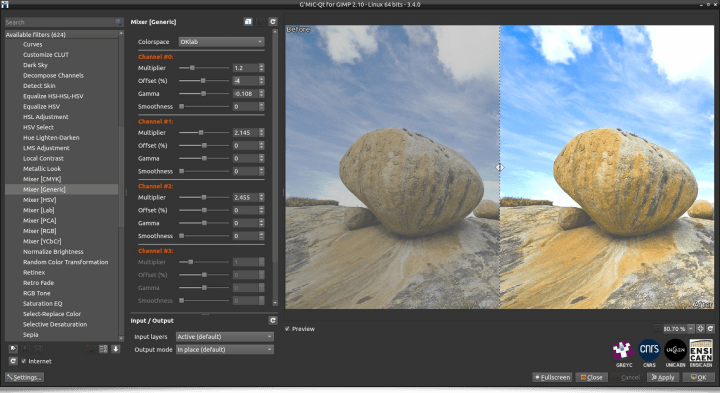
Fig.3.1.1. The Colors / Mixer [Generic] filter enriches the already available arsenal of filters for contrast and color enhancement.
Let's also talk about the Details / Sharpen [Alpha] filter, which, as its name suggests, allows for fine detail enhancement in photographs. It minimizes the appearance of edge halos, a common artifact arising from many detail enhancement filters. The Details/Sharpen [Alpha] filter is based on an original technique of pyramidal decomposition of the image obtained from an Alpha blending operator.
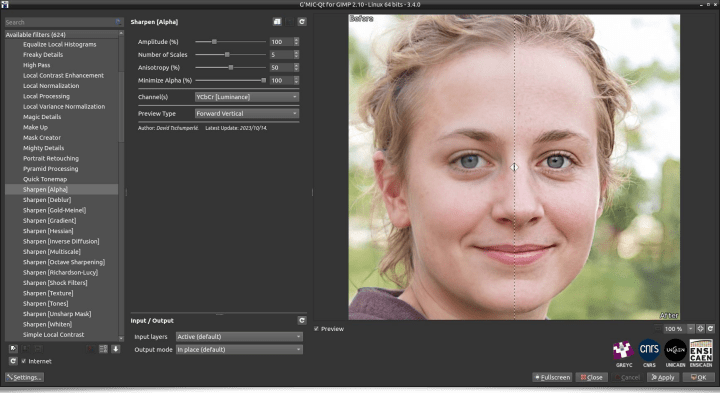
Fig.3.1.2. The Details / Sharpen [Alpha] filter allows for fine detail enhancement in photographs, minimizing the appearance of halos.
Finally, the Layers / Spatial Blend Multi-Layers filter merges into a single image multiple shots from the same viewpoint, while harnessing a spatial linear gradient between the various views. For example, one can photograph the same scene over day and night time intervals, then employ this spatial fusion filter to create time-transitional images like the one illustrated below:
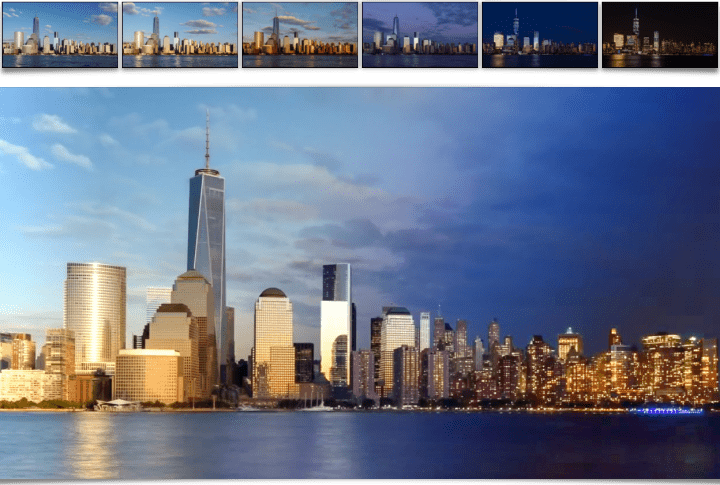
Fig.3.1.4. The Layers / Spatial Blend Multi-Layers filter allows for merging multiple photographs with an adjustable spatial linear gradient.
(Credits: the images used in the figure above are from the video Stunning New York City skyline timelapse: Day to night by the YouTube channel Rumble Viral.)
The following video illustrates the complete process, using the G'MIC-Qt plugin under GIMP 2.10:
3.2. Distortion Filters
Let's now move on to a set of new effects available to distort your images in various ways.First, the Deformations / Distort [RBF] filter, which deforms an image based on adjustable key points. A Radial Basis Function interpolation function alters distances non-linearly, applying contractions here, expansions there, all in a user-specifiable way. Mathematically inclined users can specify their own radial basis functions, placing few limits on the kinds of possible distortions.
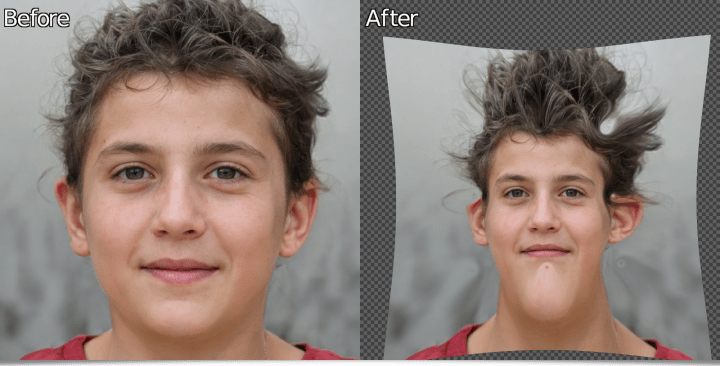
Fig.3.2.1. The Deformations / Distort [RBF] filter allows for various distortions based on RBFs. Here, specifying the radial basis function phi(r) = log(0.1+r).
Next, let's mention the arrival of an entirely new category Map Projection, which now contains fourteen filters for maps initially in the form of equirectangular projection (cylindrical equidistant maps). These may be further converted into other types of projections. This series of filters has been contributed by Kristian Järventaus, a member of the Cartographers Guild forum, a forum specialized in cartography.
We also note the arrival of the Deformations / Square to Circle [alt] filter, which transforms any rectangle (or square) centered in an image into an ellipse (or circle), and vice versa. A very specialized filter, with — at first glance — obviously few apparent applications, yet when you need it, you'll be glad to have it at hand! For example, we used it below to transform a round painting frame into a square frame:
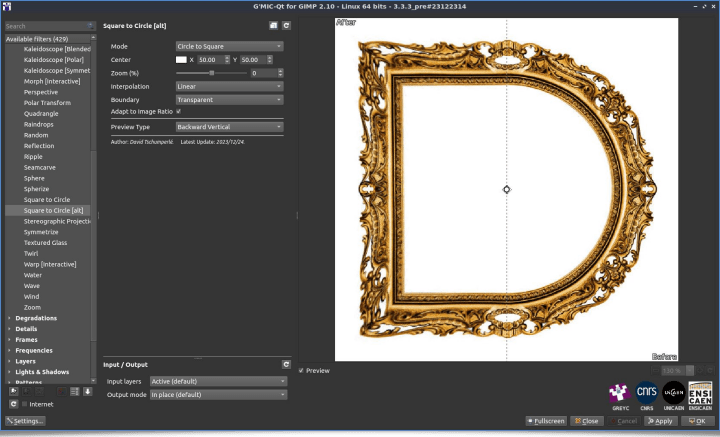
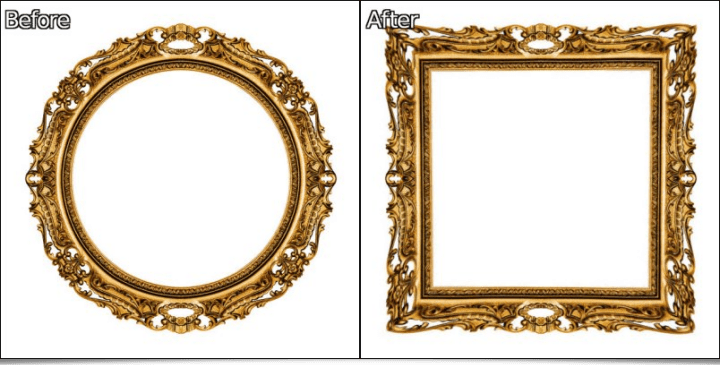
Fig.3.2.3. The Deformations / Square to Circle [alt] filter allows converting square or rectangular objects into round or elliptical objects, and vice versa.
Finally, let's conclude this review of the new image deformation filters with the Deformations / Poincaré Disk filter, which generates Poincaré disks, a family of geometric figures based on hyperbolic geometries, as illustrated in the following figure:
But where it becomes interesting is that this filter also allows you to deform images by projecting them onto these very particular geometries:
For example, we used this filter, with slight modifications, to generate the short animation, "Flyover of the Poincaré Planet", which illustrates the astonishing fractal properties of these geometric oddities:
3.3. Degradation Filters
Sometimes, one seeks to deliberately degrade images, either to simulate a real phenomenon, such as motion blur, sensor noise and the like, or in the pursuit of a purely aesthetic effect (Glitch Art). For these purposes, the following new effects have been added to G'MIC:The Rendering / CRT Scanlines and Degradations / CRT Phosphors filters mimic the image display of cathode-ray tubes (CRT), by simulating two characteristic effects of CRT displays, namely the Scanline effect and phosphor excitation. These two filters were created in collaboration with Romain Hérault, a new contributor who recently joined the GREYC laboratory.
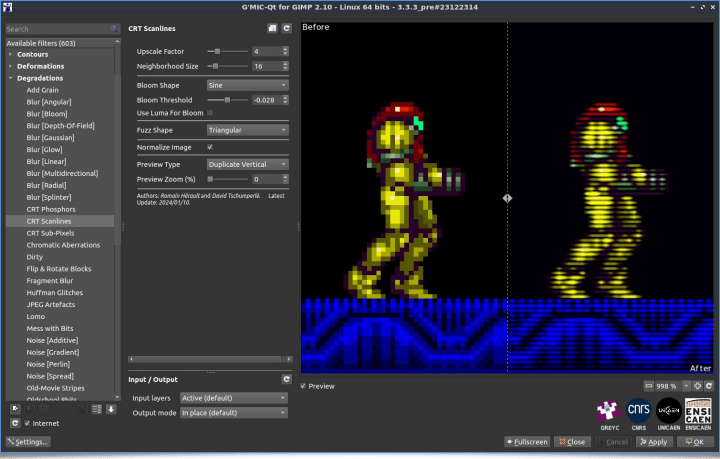
Fig.3.3.1. The Rendering / CRT Scanlines filter imitates the typical scanline effect of CRT displays.

Fig.3.3.2. The Degradations / CRT Phosphors filter simulates the phosphor display technique of CRT displays.
The Degradations / Blur [Motion] filter emulates path-based motion blur, with user-adjustable, spline-based trajectories which may be directly altered through key points in the G'MIC-Qt preview window:
The Degradations / Sloppy Mess filter is intended for Glitch Art enthusiasts. It's one of the first filters by a new contributor, Prawnsushi, who recently took an interest in the G'MIC language for filter creation. This effect offers wide-ranging parameters to produce a panoply of disjoint and disassociated outputs.

Fig.3.3.4. The Degradations / Sloppy Mess filter deliberately creates artistic digital artifacts on your images.
3.4. Rendering and Texture Filters
Rendering filters, by and large, do not require input images; they summon new imagery by algorithmic means through procedural generation.The Rendering / Underwoods filter, another creation of Prawnsushi, is nothing less than an underwood generator! One might say it's not very useful, and indeed it's not a filter that image processors, photographers, or illustrators will incorporate into their daily work.
Yet this filter illustrates the whole philosophy of the G'MIC project: To produce software that fosters algorithmic creativity. G'MIC facilitates the construction of all kinds of filters (useful or less useful), and allows free sharing with other cognoscenti of this viewpoint. In practice, this filter has the simple merit of its own existence, there for anyone to try, and thereby — possibly! — discover the extraordinary. It uses very little memory resources, perhaps a few dozen bytes, thanks to the compactness of the G'MIC language design. And moreover, the results are quite cool! And be assured that it will inevitably serve, one day or another, an artist wanting to synthesize an underwood image in two mouse clicks!
The Patterns / Reaction-Diffusion filter synthesizes textures modeled after reaction-diffusion systems.
Again, the interest in this type of filter may seem quite limited. However, it's the perfect example of a texture that — in a pipeline of filters of a similar ilk — serves as the basis for generative art. Take a texture created by this filter, apply some of the other effects available in G'MIC (e.g., the Deformations / Drop Water filter), and you're ready to produce fun animations like the one below:
The Rendering / Spline Spirograph filter is inspired by the Spirograph game for generating parametric curves, creating intriguing texture and color effects. The presence of the Random Parameters button in the G'MIC-Qt plugin is particularly welcome here, as it quickly obtains a varied panorama of diverse results!
This filter also offers an animated output mode, allowing for the synthesis of short videos like this one:
The Rendering / ABN Filigrees filter also knows how to draw interesting parametric curves, inspired this time by the filigrees found on stock certificates or paper money. This filter pays homage to the American Bank Note Company, an engraver of financial paper, active on Wall Street from the 19th century until sixty years ago.
The Rendering / Random Signature filter is also an amusing curve generator: it aims to draw random signatures, as illustrated in the video below:
Again, a filter whose usefulness cannot be debated: "It's completely useless, so it's absolutely indispensable!".
And to finish this section, let's mention the Rendering / Twisted Rays filter which, as its name suggests, generates a twisted rays effect. The use of this filter will probably remain quite unfathomable in the near term. But, even now, there may be among thousands of G'MIC users a creator seeking this precise effect — and now they can! ☺
This filter can, for example, be used to create psychedelic animated effects like this:
3.5. Artistic Effects
To conclude this list of new G'MIC filters, here are some miscellaneous filters grouped under the term "Artistic", a term used in image processing software for filters that are hard to categorize…The Artistic / Stringify filter decomposes an input image into quantized color blobs and connects the points (subsampled) located on the contours of these blobs with color segments. The rendering may resemble the curves obtained with the Spirograph game.
The Black & White / Filaments filter is based on the projection of thousands of particles from one or more edges of the image, with trajectories deformed by the image's contour geometry. The drawing of these thousands of trajectories with semi-transparent colors produces images like these:
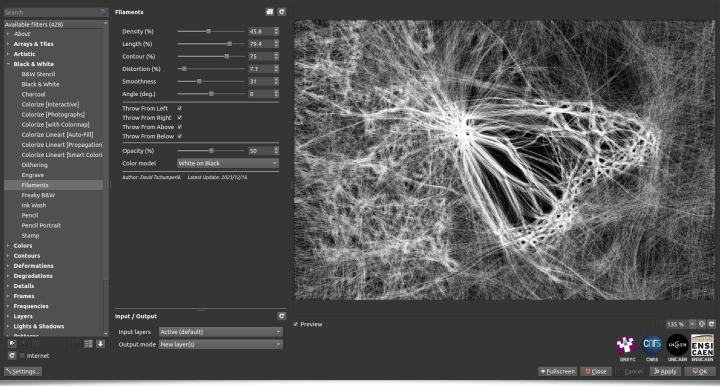
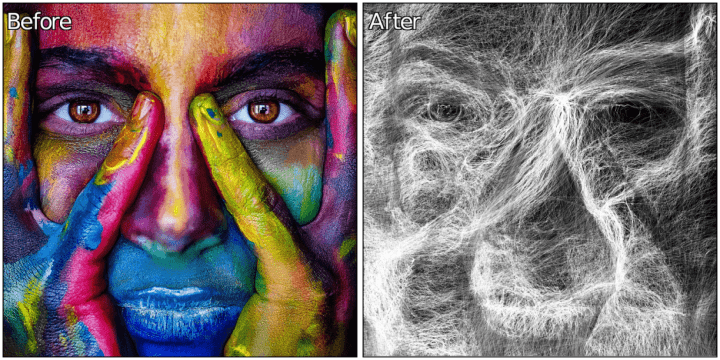
Fig.3.5.2. The Black & White / Filaments filter transforms your images into sets of deformed filaments.
The Arrays & Tiles / Loose Photos filter simulates an effect of throwing photos haphazardly on a table, so that the content of the photos constitutes a global image, as specified by the filter's settings. Many parameters are adjustable (density, size and ratio of photographs, shading parameters, etc.), giving the user a great deal of freedom over the final rendering.
The Rendering / Quick Copyright filter, which already existed in previous versions, has been re-implemented from scratch. It facilitates the insertion of a copyright text (or text signature) on a digital image. It now has many parameters to finely adjust the position of the text, its size, font, and other aspects. Combined with the automation capabilities of the G'MIC language, this filter is suited for easily inserting text, in a standardized way, on thousands of photographs.
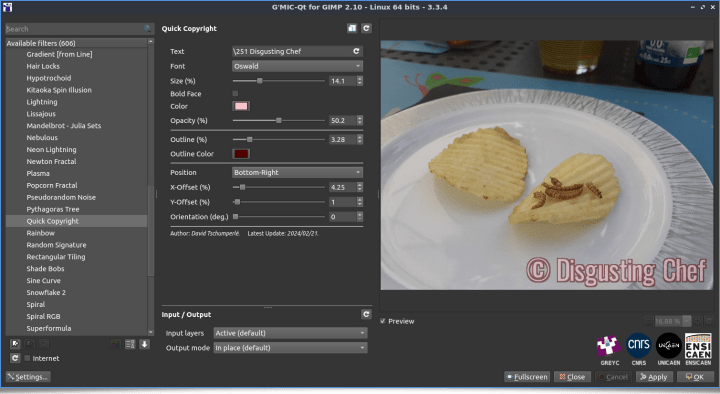
Fig.3.5.4. The Rendering / Quick Copyright filter in action for inserting copyright text on an image.
Finally, the Patterns / Random Rectangles filter transforms an image into a random partition of colored rectangles, giving an abstract image effect, vaguely in the manner of Piet Mondrian.
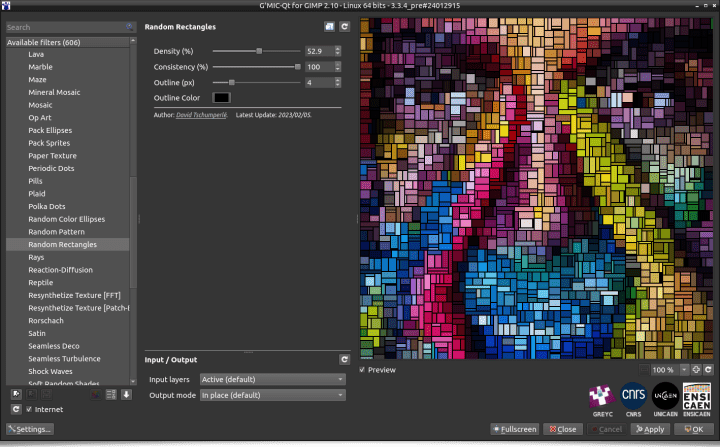
Fig.3.5.5. The Patterns / Random Rectangles filter creates a colorful partition of randomly placed rectangles on the image.
One can easily imagine using this filter to generate decorative object textures, as demonstrated in this animation below, which starts from a pure noise image:
4. A Software with Varied Uses
As we have shown, G'MIC has multiple facets with a wide range of applications. The user community is not limited to digital artists but also includes researchers, programmers, algorithmicians, etc. Below are some other varied uses of the software.Denoising JWST Images:
In October 2023, we learned from M.J. McCaughrean, senior researcher at the ESA (European Space Agency) (retired in 2024), that G'MIC was used by some people within the ESA to process images from the James Webb Space Telescope (JWST), particularly for attenuating the frequency noise appearing on some images acquired by the telescope (using the Repair / Banding Denoise filter, among others).
G'MIC was used in conjunction with among other software for creating the cover image of the Nature magazine, vol. 622, issue 7981 on October 5, 2023, as confirmed by M.J. McGaughrean and indicated in the associated publication, of which he is a co-author.
It was a pleasant surprise for us developers to learn this and realize that G'MIC was being used in the field of astrophysics.
Creative Coding:
G'MIC proves to be a valuable ally for creative coding, due to its ability to easily generate and manipulate images through its standard library of operators. Over the past year, we have enjoyed exploring its possibilities for algorithmic creation of images and animations, a small selection of which is shown here:
Let's start with this little animation of swirling snowflakes (source code, 30 lines):
Then let's continue with this amusing variant of the Rock-Paper-Scissors game, where each pixel in an image (whose initial random values represent either 0: a rock, 1: paper, or 2: scissors) plays consecutively with its 8 neighbors, keeping the element that won the most. In the second phase, we stylize the sequence of these different label images, again, with the Drop Water filter, resulting in the following animation, which we might call "Hell's Soup" (source code, 30 lines).
Finally, let's dive back into the wonderful world of Mandelbrot fractals, starting with this rendering of the Mandelbrot set using the Orbit Trap technique, allowing the rendering to be mapped with a color image:
Then, with another type of rendering known as Buddhabrot, but here considering complex series of the type z_[n+1]=z_[n]^p + c, and linearly varying the real exponent p between 0 and 6 (rather than keeping p=2 as for the classic Mandelbrot set), to generate each image of the animation below (source code and details on this page):
Note that generating these high-resolution modified Buddhabrot images requires significant computation time (a few minutes per image). I find this animation intriguing: it is quite easy to see/hallucinate familiar shapes when you look closely at some frames of the animation, a bit like when you look at clouds in the sky (if you think you see in this animation, a bear's head, an old man sitting, a character's silhouette, a dragon's head, ..., then you are not alone in being a bit of a dreamer ☺).
Image Conversion for String Art :
String Art is a form of artistic creation characterized by the use of colored threads connected between points (most often nails) to form a pattern or reproduce a photograph (usually portraits). As an experiment, we wrote a G'MIC script that tries to transform a user-selected grayscale input image into a series of instructions to follow to connect numbered nails with a monochrome thread, to reproduce the image as faithfully as possible (considering the constraints specific to this mode of creation):
Can you recognize who is supposed to be represented in the photo below? An attempt not necessarily crowned with success, which deserves to be explored further (especially by managing threads of different colors), but which nevertheless illustrates the multiple possibilities for experimentation that the G'MIC framework allows!
Other Related Links:
To conclude, here are some miscellaneous links that demonstrate the versatility of G'MIC:
1. Steganography: How to hide data in a noise image? The rand command can generate random values with density, meaning their probability density is a function specified by the user. This has, for example, the application of hiding 256x256 images in histograms of 16-bit/channel noise images, as detailed on this page.
2. Artistic Galleries: Ivelieu and Gannjondal are two artists on the Deviant Art site who sometimes use G'MIC in their artistic creation process. Take a look at their respective galleries, it's worth it!
3. We learned from Gilles Caulier that the next version of the photo management program digiKam 8.4.0 will include a G'MIC processing tool within the Batch Queue Manager, which will allow digiKam users to integrate G'MIC filters into their post-processing workflows.
4. Thiojoe is a YouTuber who produces videos about technology and is a programmer in his spare time. He started developing a free tool based on G'MIC to easily generate animations, a tool that you can find here. It only works on Windows for now, but we'll keep an eye on it.
5. Finally, let's mention the YouTube channel of JustCallMeInsane, a digital illustrator using Krita. She recently made a series of videos exploring the different categories of filters in the G'MIC-Qt plugin for Krita. We hope in passing that the Krita development team, which manages its own version of the plugin, will be able to update it quickly.
And that's it for the latest news around the G'MIC project and its new version 3.4.0.
5. Conclusions
We could summarize this report by saying that the G'MIC project "continues its journey".G'MIC remains, of course, a modest project, developed and maintained by a small team (of enthusiasts), but with a growing number of users and increasingly varied usage feedback. This framework has the chance to be developed within the GREYC, a public research laboratory, supported by the laboratory's supervisors (the CNRS "Computer Science" institute, the University of Caen, and ENSICAEN), and encouraged by the laboratory's management.
And even if most of the development on this project has probably already been done (more than 15 years of development after all), we are confident that G'MIC will continue to evolve; in any case, we will try, as long as it remains useful to image processors of all kinds!


 Home
Home Download
Download News
News Mastodon
Mastodon Bluesky
Bluesky X
X Summary - 17 Years
Summary - 17 Years Summary - 16 Years
Summary - 16 Years Summary - 15 Years
Summary - 15 Years Summary - 13 Years
Summary - 13 Years Summary - 11 Years
Summary - 11 Years Summary - 10 Years
Summary - 10 Years Resources
Resources Technical Reference
Technical Reference Scripting Tutorial
Scripting Tutorial Video Tutorials
Video Tutorials Wiki Pages
Wiki Pages Image Gallery
Image Gallery Color Presets
Color Presets Using libgmic
Using libgmic G'MIC Online
G'MIC Online Community
Community Discussion Forum (Pixls.us)
Discussion Forum (Pixls.us) GimpChat
GimpChat IRC
IRC Report Issue
Report Issue
